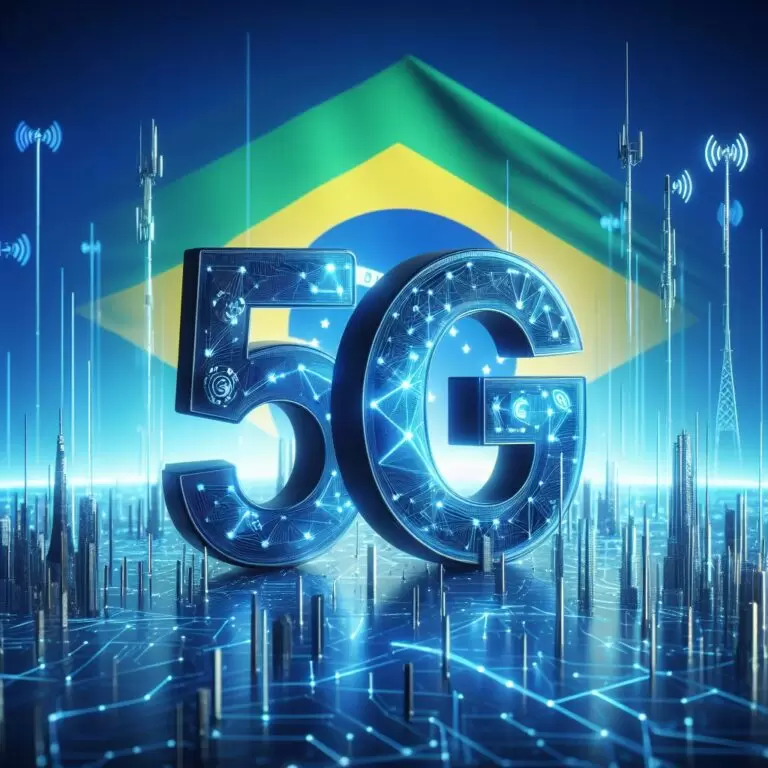
The Internet of Things (IoT) has revolutionized the way we interact with the world around us. From connected devices to automation systems, IoT is increasingly present in our homes, businesses, and even on the streets.
Its ability to connect physical objects to the internet, allowing them to communicate with each other and with users, is one of the most significant technological advances in recent times. The importance of IoT in everyday life goes far beyond a simple concept; it has impacted the way we live, work, and interact with technology.
In practical terms, IoT facilitates a wide range of everyday activities, providing greater comfort, safety, efficiency, and even sustainability. However, many people are still unaware of the true possibilities of this technology and how it can transform their daily lives.
Through practical examples, we can understand how IoT is changing the way we interact with the world, giving us more freedom and control. This article explores the importance of IoT in everyday life, providing examples and tips for those who want to take advantage of this technology.

Throughout this article, we'll cover key examples of IoT in everyday life, such as smart homes, wearable devices, and even connected healthcare systems. We'll also provide a practical tutorial to help you start applying IoT to your daily life, making your routine more efficient and connected. Follow along and discover how IoT is helping create a smarter, more accessible future for all.
One of the most notable areas where IoT has shown its impact is in smart homes. Through the connectivity of devices such as thermostats, security cameras, appliances, and lighting systems, people are transforming their homes into more efficient and safe spaces.
With the advancement of IoT, it's possible to control devices in your home remotely, using just a smartphone or a virtual assistant like Alexa or Google Assistant. Smart thermostats, like Nest, automatically adjust the temperature based on your routine, saving energy and increasing comfort. Additionally, smart light bulbs, like Philips Hue, can be adjusted to different intensities and colors, all with a simple voice command.
Another significant example of IoT in the home is the use of security cameras and smart monitoring systems. Cameras like Ring's, for example, allow you to monitor your home in real time, view recordings, and receive alerts directly on your phone when something suspicious happens. This provides a sense of security and control, even when you're not home.
IoT has also transformed the way we interact with home appliances. Smart refrigerators, like Samsung's, can alert you when your food is about to expire or even suggest recipes based on the available items. Washing machines, ovens, and even vacuum cleaners, like the Roomba, can be programmed and controlled remotely, making everyday life more convenient and effortless.
IoT has also gained prominence in the corporate environment, helping to improve efficiency, reduce costs, and increase collaboration between teams. From connected devices to optimize internal processes to real-time communication solutions, IoT is transforming the way companies operate.
Companies across a variety of sectors are adopting IoT to automate processes that were previously performed manually. In the manufacturing sector, for example, sensors connected to machines enable performance monitoring and predictive maintenance, preventing unexpected failures and optimizing production. IoT-connected ERP systems help integrate all areas of the company, making inventory, purchasing, and sales management much more efficient.
In the office environment, IoT improves connectivity and collaboration between teams. Tools like Microsoft Teams and Slack, combined with IoT devices, allow teams to communicate in real time, regardless of location. Room occupancy sensors and smart cameras can optimize workspace utilization by automatically scheduling meetings in available rooms or adjusting temperature and lighting according to team preferences.
IoT also plays an important role in the efficient management of corporate resources. Connected sensors can monitor the consumption of energy, water, and other essential resources, enabling companies to make more informed and sustainable decisions. This not only helps reduce costs but also contributes to corporate sustainability, an increasingly important value for many companies.
The Internet of Things has gained prominence in the healthcare sector, offering innovative solutions for patient monitoring, remote diagnosis, and personalized health management. Connected devices are transforming the way healthcare professionals care for their patients.
Wearable devices, such as smartwatches, are changing the way we monitor our health. They collect real-time data, such as heart rate, oxygen levels, and even sleep patterns, and send it to mobile apps or doctors who can monitor it remotely. This enables more efficient management of chronic diseases and faster response to potential health problems.
With IoT, advances in telemedicine are impressive. Sensors and connected devices allow doctors to perform exams and monitor patients remotely. For example, blood pressure can be monitored remotely, and the data can be sent directly to doctors, facilitating early diagnosis of diseases. This is particularly useful in remote regions, where access to healthcare professionals may be limited.
In addition to remote monitoring, IoT also provides direct support to patients with devices such as pacemakers and connected insulin pumps. These devices can send data to doctors, allowing for real-time adjustments. This provides continuous and personalized monitoring, increasing the quality of care and patient safety.
Urban mobility is also being profoundly impacted by IoT, with solutions that make transportation smarter, more efficient, and safer. Cities and transportation systems are adopting connected technologies to improve the passenger experience and optimize traffic flow.
Smart public transportation systems, such as connected buses and trains, provide passengers with real-time information, such as arrival times and vehicle occupancy. This improves the user experience and helps avoid overcrowding, making public transportation more efficient.
Another practical example of IoT in transportation is the advancement of autonomous vehicles. Connected sensors and cameras allow cars to navigate safely without driver intervention, using real-time information about traffic, road conditions, and obstacles. This not only increases safety but also reduces pollutant emissions, contributing to a more sustainable environment.
For companies that manage vehicle fleets, IoT enables more efficient vehicle monitoring. Connected sensors provide information on vehicle location, fuel consumption, and performance, allowing for route optimization and reduced operating costs.
If you're interested in adopting IoT in your daily life, the process is simpler than it seems. Here's a step-by-step guide to implementing IoT in your home and workplace.
First, identify which aspects of your life or work you want to improve with IoT. Do you want more comfort at home? Better healthcare management? Or more efficient transportation?
Research and choose connected devices that meet your needs. If it's a smart home, look for smart thermostats, security cameras, and light bulbs. If it's for health, opt for wearable devices that monitor your well-being.
Connect your devices to the internet and, if necessary, integrate them with a centralized platform, such as an app or voice assistant. This will facilitate real-time control and monitoring.
Explore all the features offered by these devices and maximize the use of IoT in your daily life. This will not only make your life more efficient, but also more connected and intelligent.
The Internet of Things has a profound and growing impact on our daily lives. From automating our homes to improving healthcare and optimizing transportation, IoT is transforming the way we live, work, and interact with technology. By adopting IoT, we can achieve unprecedented levels of convenience and efficiency, making our routines smarter and more connected. By implementing IoT devices, we can reap the benefits of this innovative technology, making our lives more practical, safe, and sustainable.